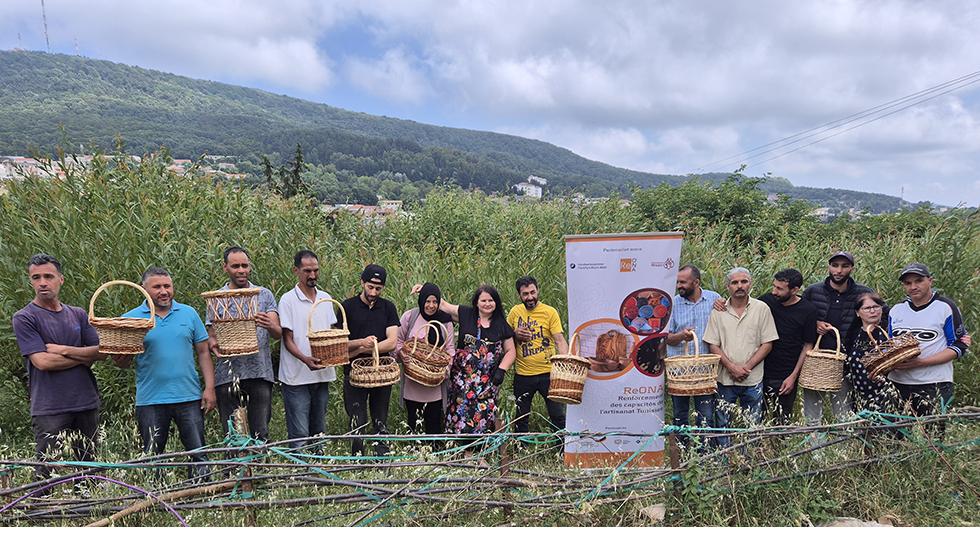Bogumiła Frąckowiak, Head of the Economic Development Department at the Wielkopolska Crafts Chamber (Wielkopolska Izba Rzemieślnicza w Poznaniu) and project manager for “Craftspeople without Borders”, interviewed Katarzyna Wachowiak-Szweda, a master basket maker who conducted a training course in Tunisia as part of the “Craftspeople without Borders” project.
Interview in Polish: Wikliniarski staż w Tunezji
CwB: Katarzyna, you gave a training course in Tunisia. What was the mission like and what were its goals?
Katarzyna: Yes, in June, I had the pleasure of leading an intensive one-week basket maker training course in Aïn Draham, Tunisia. There were three main goals: to share knowledge about basketry techniques used in Poland, to teach new weaving methods, and to show that this profession can be modern and profitable – not just traditional. I also wanted participants to view their work from a different, more artistic and creative perspective.
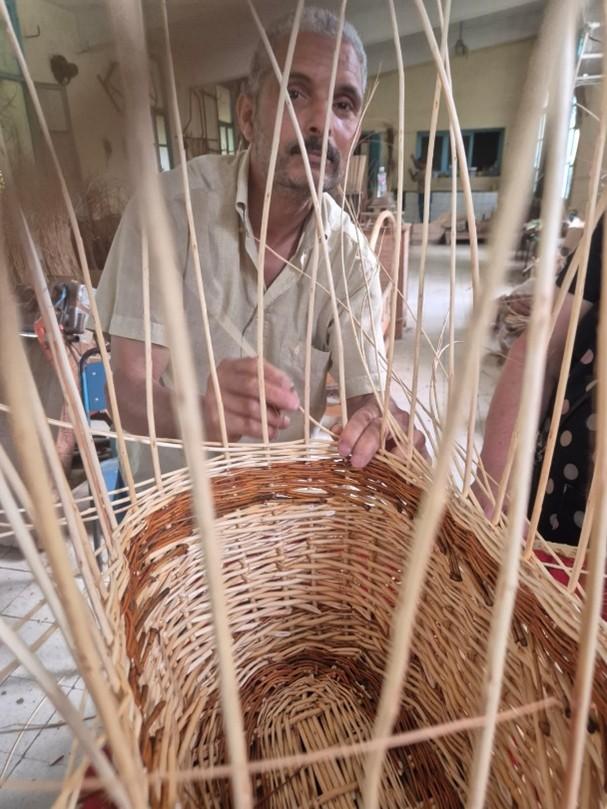
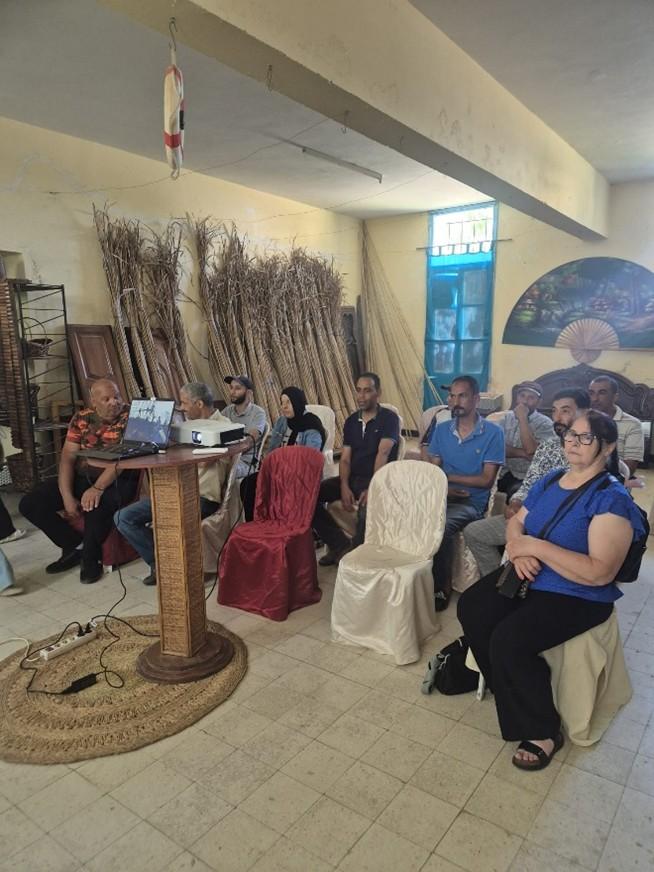
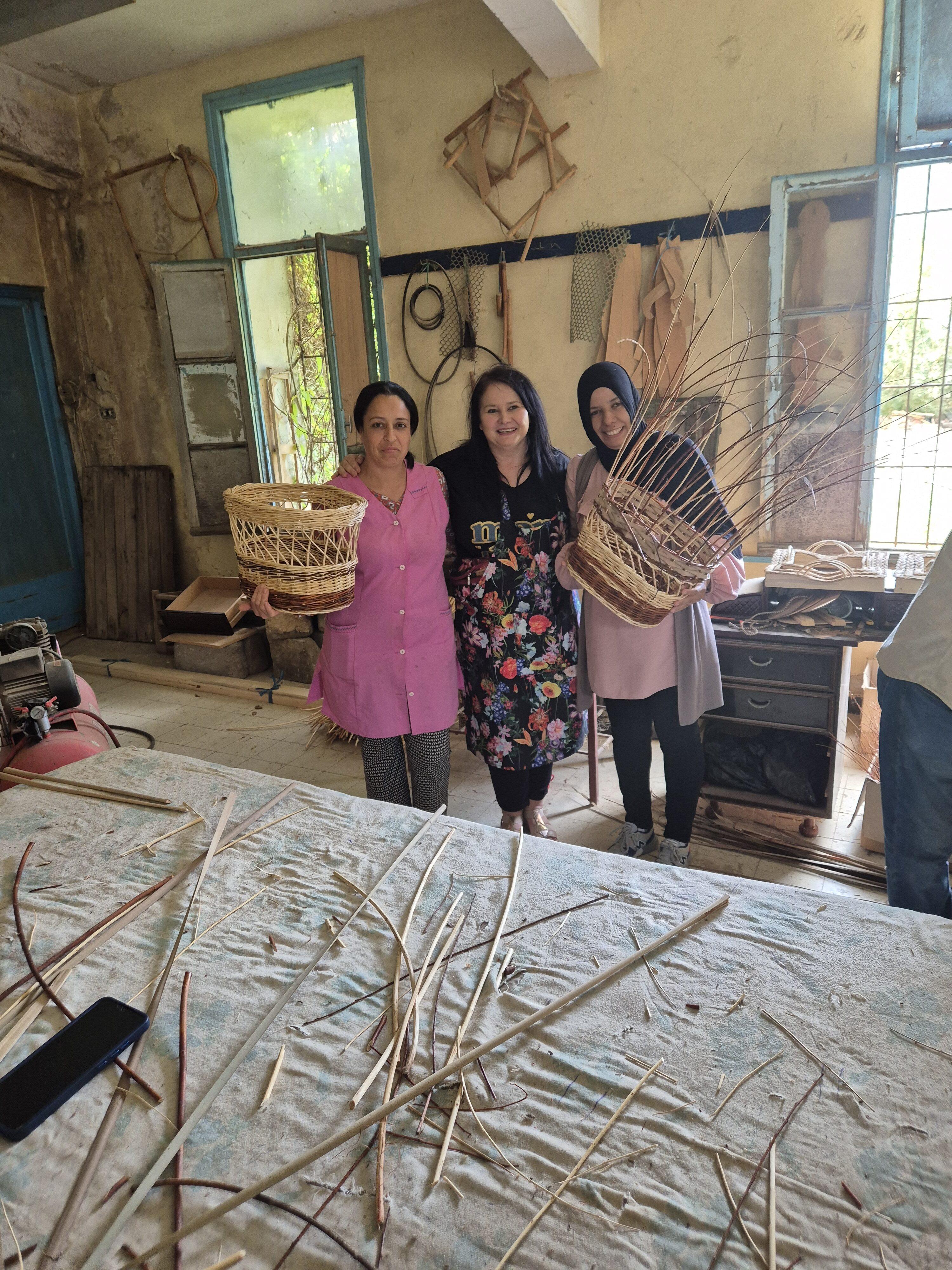
CwB: How many participants were there and what were their expectations?
Katarzyna: 17 persons took part in the training, including one woman. They were local craftspeople – some with extensive experience, others less, but all very eager to learn and work. I prepared a flexible training program, as I didn’t know in advance what materials the participants would have. So, I was able to gradually adapt the lesson topics.
CwB: Can you describe a typical training day?
Katarzyna: We worked daily from 8h to 14h, each day had a special topic. On the first day, I had to get to know the participants and the local materials. I showed a presentation on Polish basketry and short videos from wicker plantations and wicker festivals. Then I moved on to hands-on training in basic weaves – spreading ribs, twill weave, and snake ends. On the second day, the participants perfected their weaving techniques – making side walls and various types of ends. The grid and warp weaves were a real hit! The participants quickly mastered them and created several beautiful baskets.
CwB: The training was very intensive. What difficulties arose?
Katarzyna: Yes. The biggest problem was the quality of the wicker – it was poorly processed, which made work difficult, especially with precise weaving. Unfortunately, I couldn’t bring the wicker from Poland, which would probably have made our task easier. But despite this, the participants were very motivated – they never complained, they always looked for solutions.
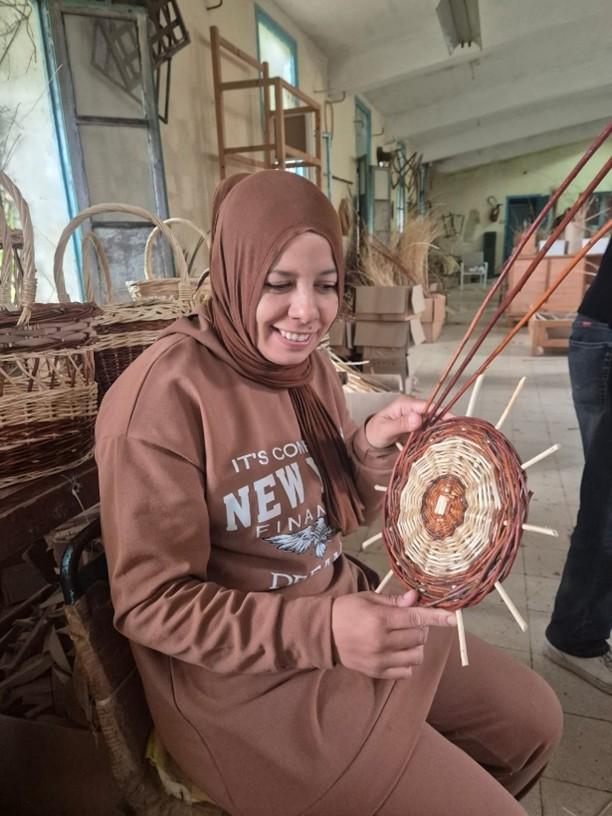
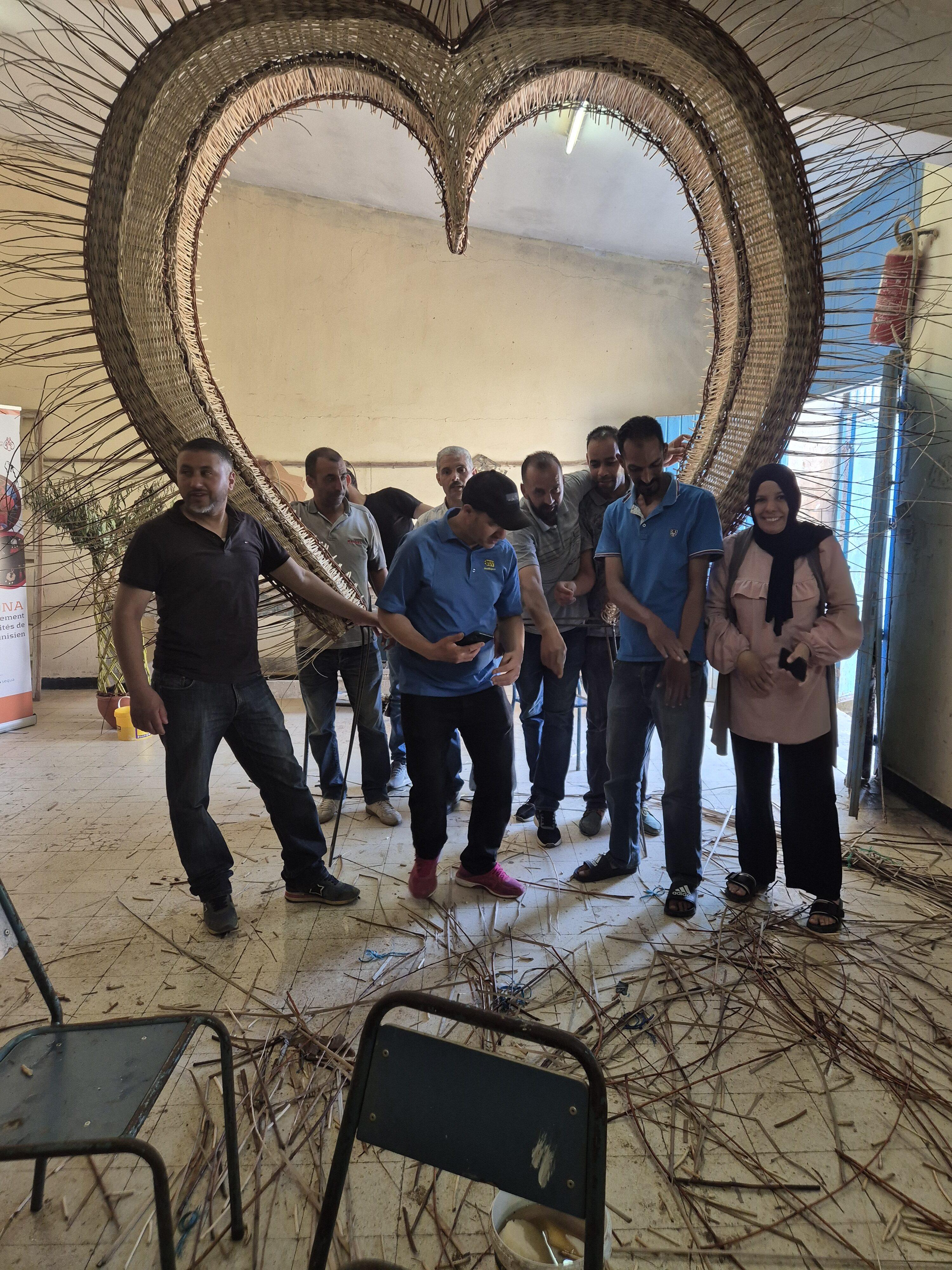
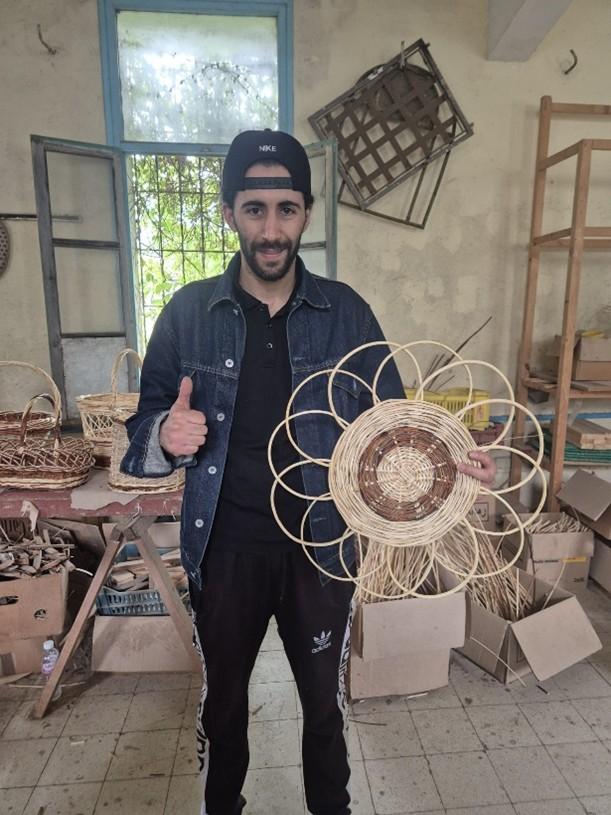
CwB: What else did you do with the participants?
Katarzyna: Yes! On the third day, I proposed creating a large three-dimensional form – a wicker heart. The participants loved this idea, and a local welder made a metal frame for us. We wove this structure together for two days. Upon completion, this heart was placed at a viewpoint in Aïn Draham as a tourist attraction.
I also showed them how to make wicker trees and flowers – decorative forms that can be very profitable for Tunisian artisans. On Thursday, the Minister of Tourism visited us, proving that our training and work were noticed and appreciated.
CwB: What are the main benefits of the training in your opinion?
Katarzyna: First and foremost, the enormous amount of knowledge and skills acquired. Each participant created hie/her own baskets using various techniques, learned new weaves and finishes, and learned the secrets of wicker processing, sorting, and even plantation maintenance. Together, we also created a large spatial form – a heart – which we hadn’t initially planned. At the end, I handed out certificates of attendance, and three participants were invited to the World Wicker Festival in Nowy Tomyśl (Poland) in 2026.
CwB: What are your personal reflections after this trip?
Katarzyna: It was a beautiful and valuable experience. I received enormous support from the participants, and above all, the organisers – Ms. Aïcha Laamouri and Ms. Beya Mahfoudh – who were incredibly friendly and helpful. The interpreter Mr. Abdelwaheb Khedimi not only translated but also provided invaluable assistance with various technical, organisational, and logistical matters. Thanks to this, we were able to implement a very ambitious program and establish a genuine collaboration in a short time. I felt I was conveying something important, while also learning a lot myself.
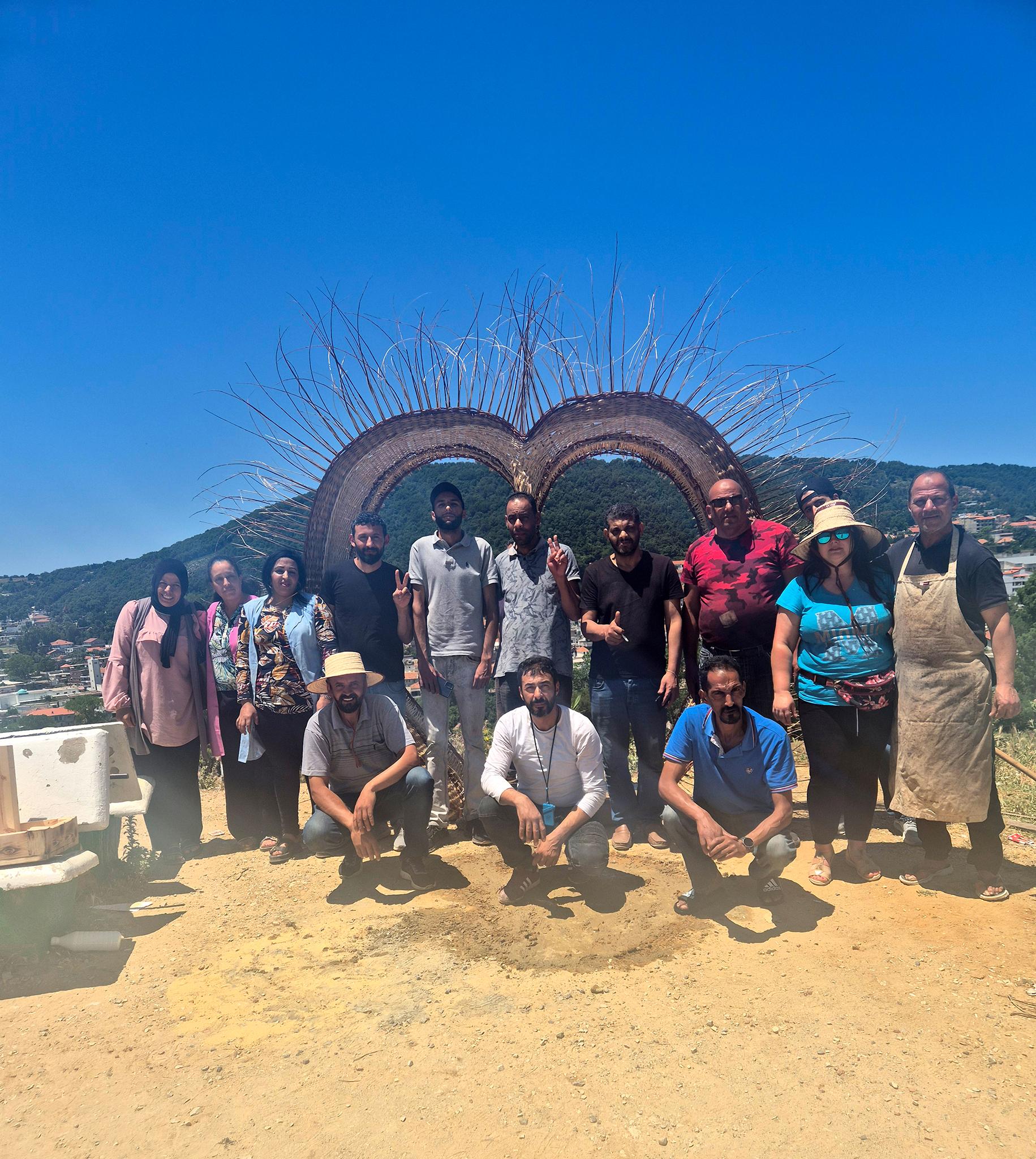
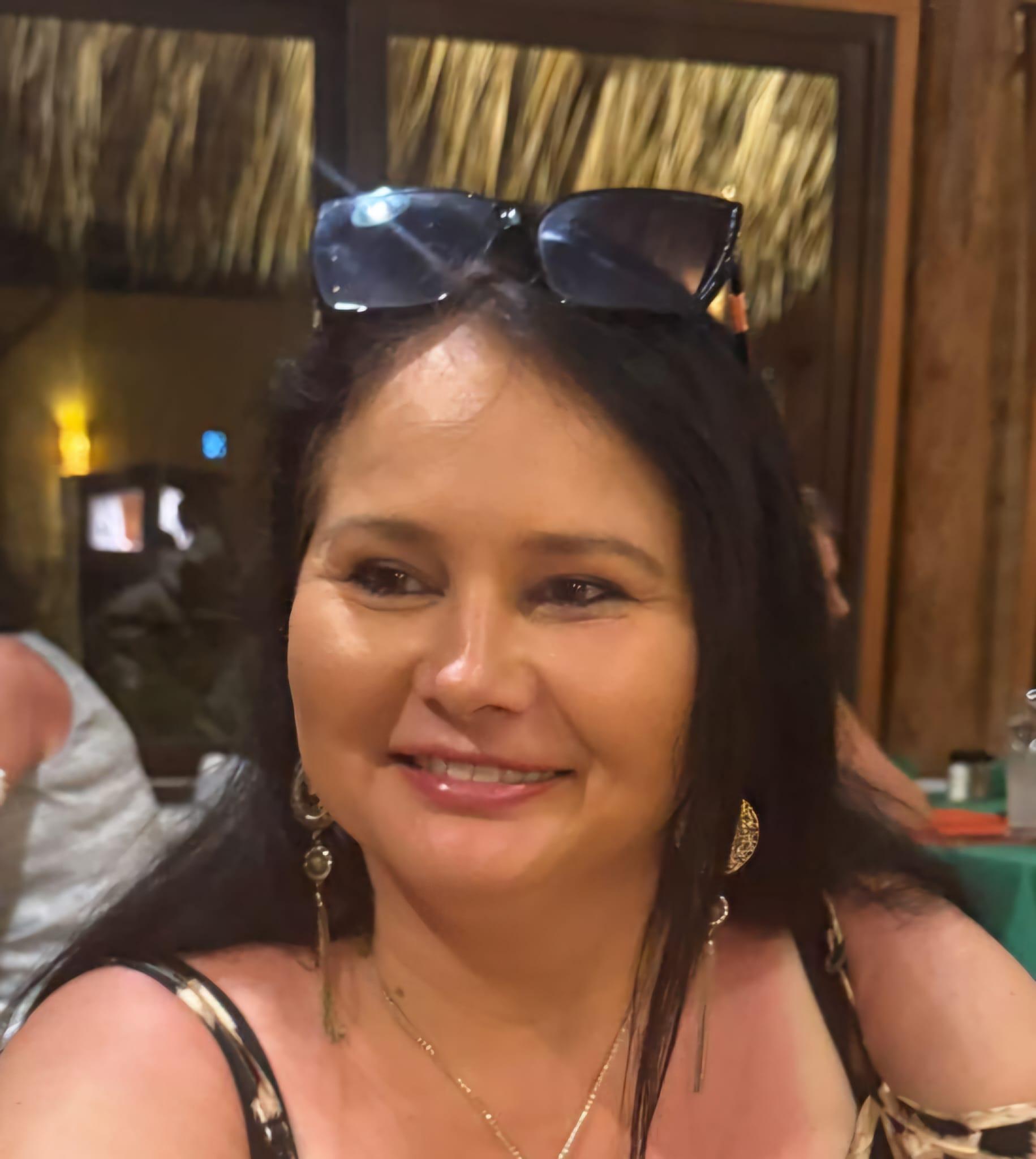
CwB: Are there any plans to continue such a project?
Katarzyna: I would love to. Another mission in Aïn Draham would be invaluable – this time, perhaps with better-prepared materials and greater support for local wicker growers. This would help develop this profession in the region and make it more lucrative and competitive. I also dream of supporting the establishment of local wicker plantations and training in wicker processing – then the results would be even more long-lasting.
CwB: Thank you for the interview, and congratulations on the wonderfully conducted training, full of passion and inspiration! The creation of the wicker heart will certainly remain in the memories of the residents of Aïn Draham for a long time – not only as an artwork, but also as a symbol of cooperation, warmth, and a shared goal. Of course, we sincerely wish you the fulfilment of your ambitious plans.
Katarzyna: Thank you very much. I hope this is just the beginning of a long-term collaboration.
All interviews in Polish: Projekt – Rzemieślnicy bez granic

